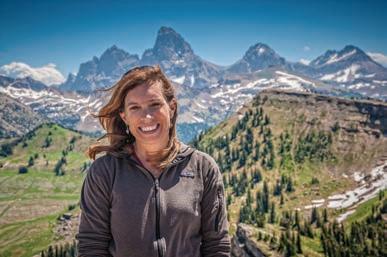
1 minute read
Backcountry adventurers know they’re taking chances

WRITERS ON anyone who’s stood on the top of a slope and thought, ‘Well, this is going to kill me, but it’s going to be epic powder
“We believe that with training, plansion-making, and a solid ski partner who calls us on our blind spots, we can make it safer,” she added.
In 2009, Bruce Jamieson, a professor of civil engineering at the University of Calgary in Albert, Canada, took accident data collected
LINDA SHAPLEY Publisher lshapley@coloradocommunitymedia.com
A publication of
Contact Us: 27972 Meadow Dr., #320 Evergreen, CO 80439 - 303-566-4100
Mailing Address: 750 W. Hampden Ave., Suite 225 Englewood, CO 80110
Phone: 303-566-4100
Web: CanyonCourier.com
To subscribe call 303-566-4100
MICHAEL DE YOANNA Editor-in-Chief michael@coloradocommunitymedia.com
LINDSAY NICOLETTI Operations/ Circulation Manager lnicoletti@coloradocommunitymedia.com
DONNA REARDON Marketing Consultant dreardon@coloradocommunitymedia.com in North America and Switzerland to come up with a risk-comparison chart. e data was presented in “millimorts,” or one death per million. One millimort is the chance an average 20-year-old male has of dying from any cause on any day.
Himalayan climbing turned out to be the riskiest activity Jamieson considered, with a one in 40 chance of dying on an 8,000-meter peak, or 12,000 millimorts. Riding a motorcycle eight hours a day earned 605 millimorts, while backcountry skiing in Canada, using usual risk-reduction practices, came in at four.
Of course, not all skiers try to minimize risk. Recently, I saw a group of ve riders swooping down a steep gully, hooting and hollering as they
KRISTEN FIORE West Metro Editor kfiore@coloradocommunitymedia.com
DEB HURLEY BROBST Community Editor dbrobst@coloradocommunitymedia.com
RUTH DANIELS Classified Sales rdaniels@coloradocommunitymedia.com ew by. e avalanche hazard that day was moderate. Still, ve people skiing a slope like that at one time is outside normal risk-reduction practices and could have easily ended in tragedy.


Jamieson’s data is now more than a decade old, but the likelihood of being killed in an avalanche probably hasn’t changed much. It may have even lessened, considering the growing number of backcountry users in avalanche terrain that are sharing the risk.
When I started skiing in the backcountry decades ago, we would see only a handful of other people. Today, SnowSports Industries America
Columnists & Guest Commentaries
Columnist opinions are not necessarily those of the Courier.
We welcome letters to the editor. Please include your full name, address and the best number to reach you by telephone.
Email letters to kfiore@coloradocommunitymedia.com
Deadline Wed. for the following week’s paper.










